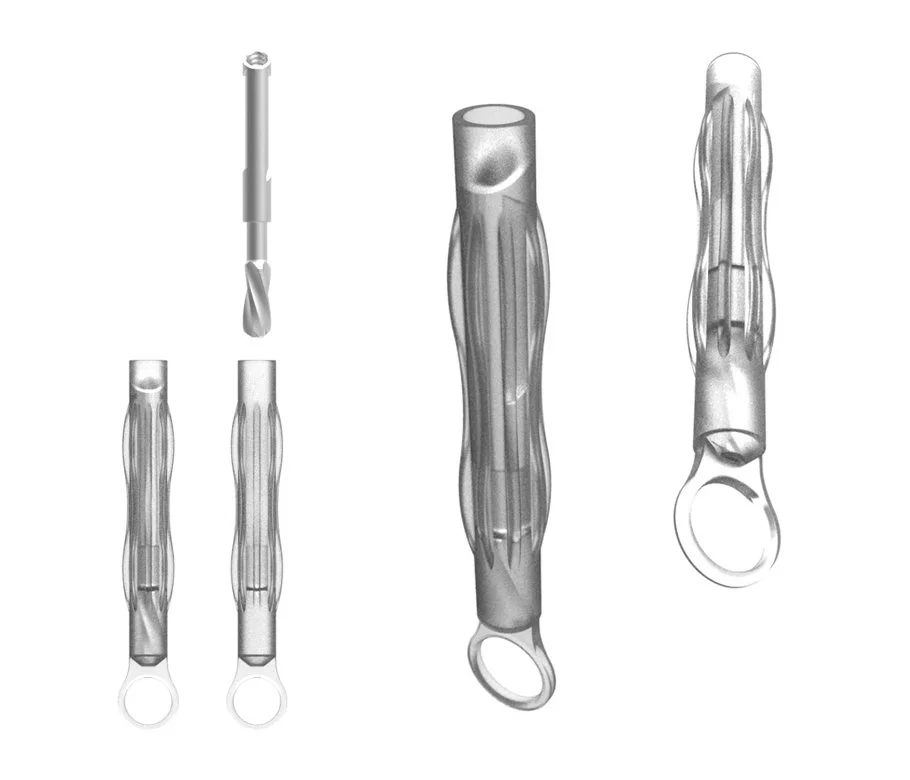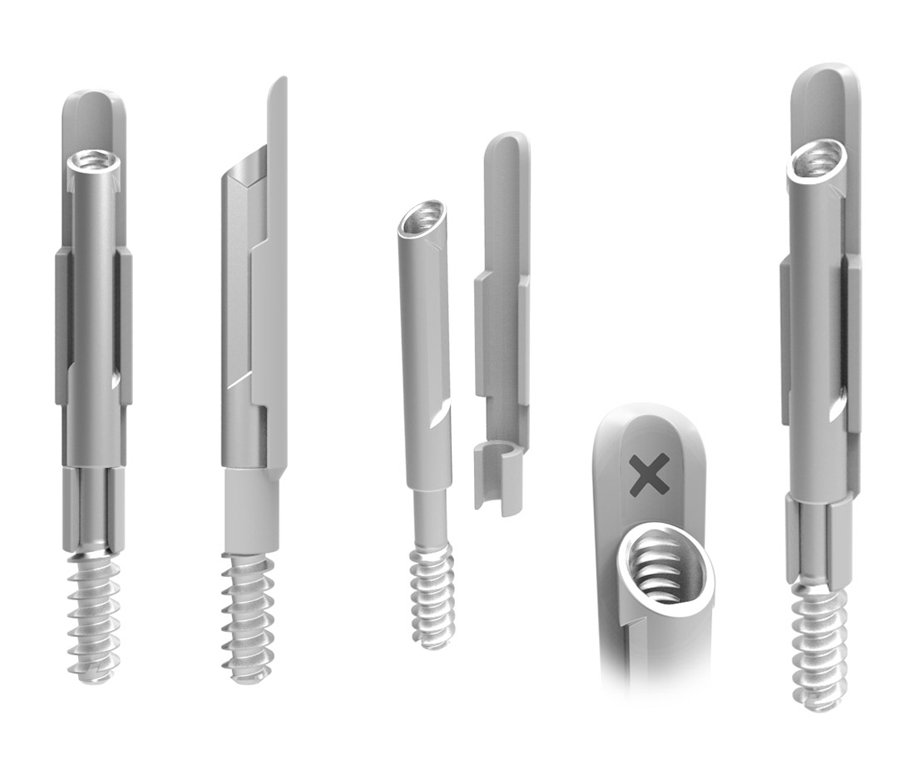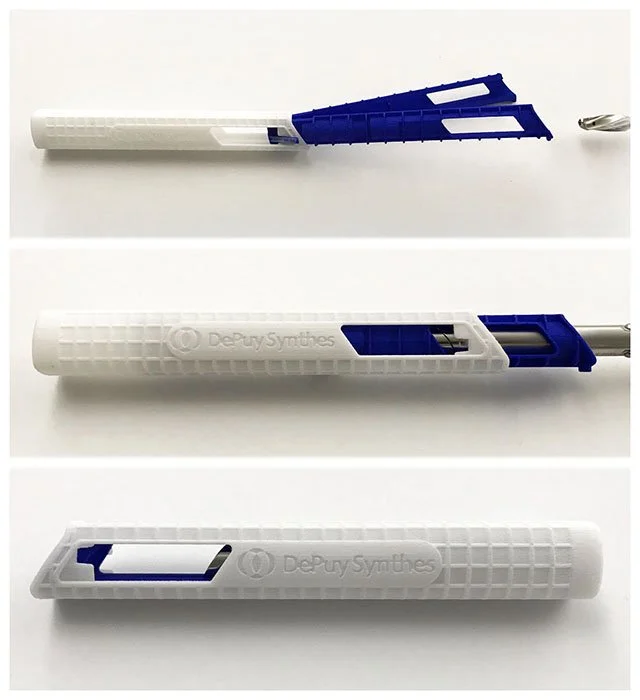Packaging for trochanteric femoral nail telescoping head element
Design a package for a femoral bone implant that prevents the accidental collapse of parts. The package should be user-friendly and enhance the surgical workflow.
The system consists of an implant and a packaging device assembled together. The packaging holds the implant's outer sleeve and head element in the desired position relative to each other.
Process
Information was collected from existing products in the field, and requirements were established by key stakeholders. Then, brainstorming sessions, including sketch ideation, were conducted. Once concepts that could meet the packaging needs were identified, 3D models were created and assessed. The most promising concepts were prototyped and evaluated. Finally, a solution that met the team's requirements was agreed upon.
The problem
Design packaging for the trochanteric femoral nail telescoping head element. The current packaging often causes the implants to collapse, leading to failure. If an implant collapses before surgery, it must be discarded.
My role
Lead UX designer, UX researcher, industrial designer, and project manager.
3D Renderings
The most promising concept was identified and refined. The round shape was squared off to prevent rolling, and size constraints were implemented to accommodate various implant sizes. A window was added for clear visibility of the implant as surgical equipment is attached. Different materials were then evaluated to determine the best option.
Proof of Concept, 3D printing
By combining Proof of Concept with 3D printing the development process was accelerated. It helped ensures practical viability and enhanced the overall quality and reliability of the final product.
Rapid Prototyping: Allowed for faster iteration and testing of design concepts.
Cost-Effective: This 3D-printed prototype was significantly more cost-effective than a traditional prototype. It allowed stakeholders and end users to assess the sliding mechanism and overall ease of use.
Customization: 3D printing enabled easy customization and design adaptation, which was essential for creating this product. Quick adjustments could be made to accommodate different sizes and shapes, such as implants.
Physical Testing: Having a tangible prototype helped in better assessing the fit, form, and functionality of the design in real-world scenarios.
Design Validation: This prototype enabled the team to validate each concept and ensure that all components fit together as intended, reducing the likelihood of errors in the final product.
Patent Filing
To protect the intellectual property created by the team, a utility patent was filed. This patent will help safeguard our innovative ideas and technologies.










